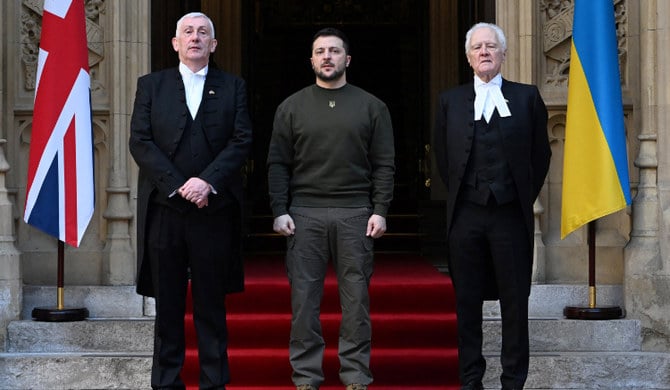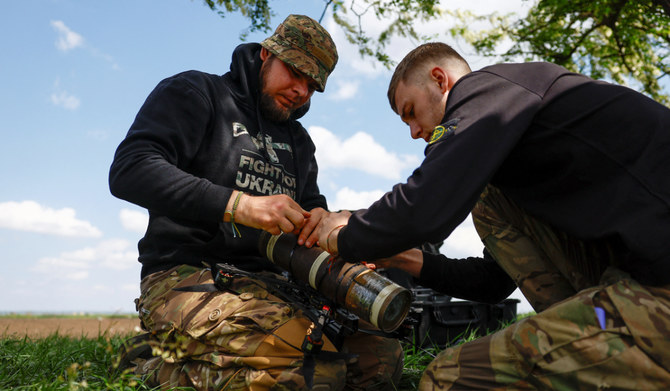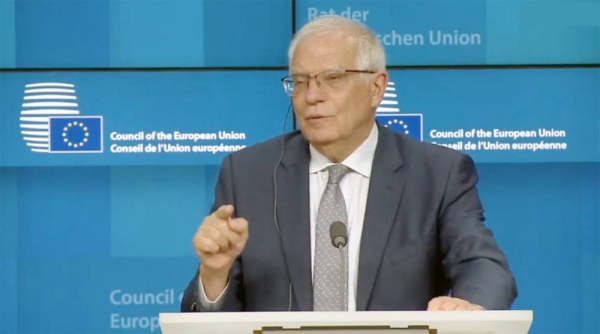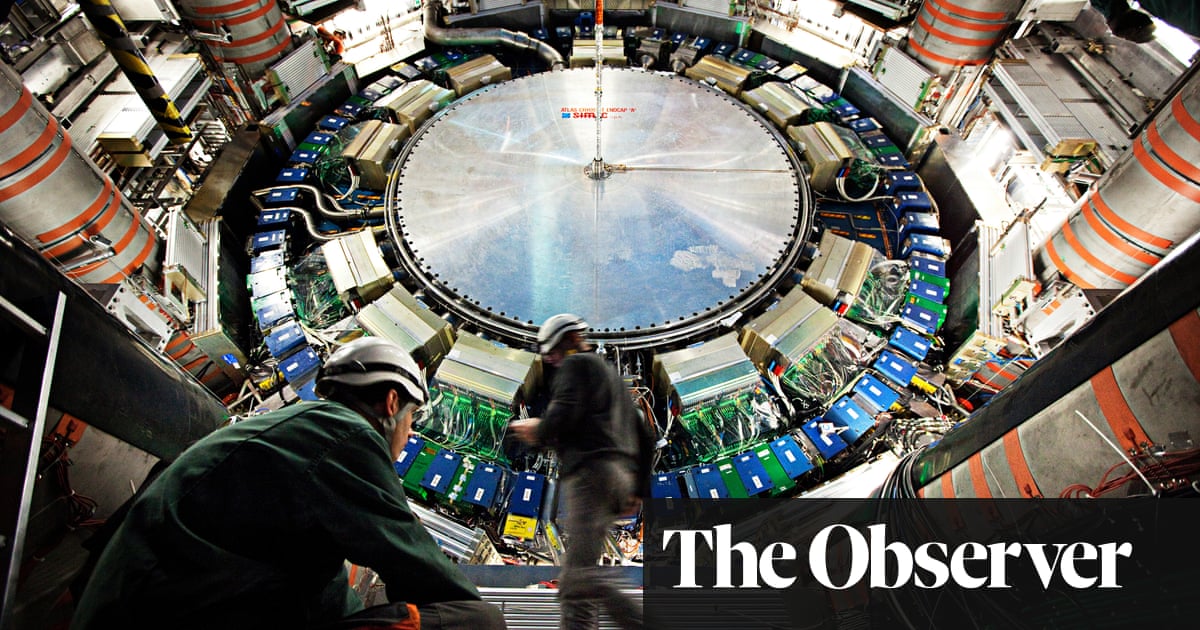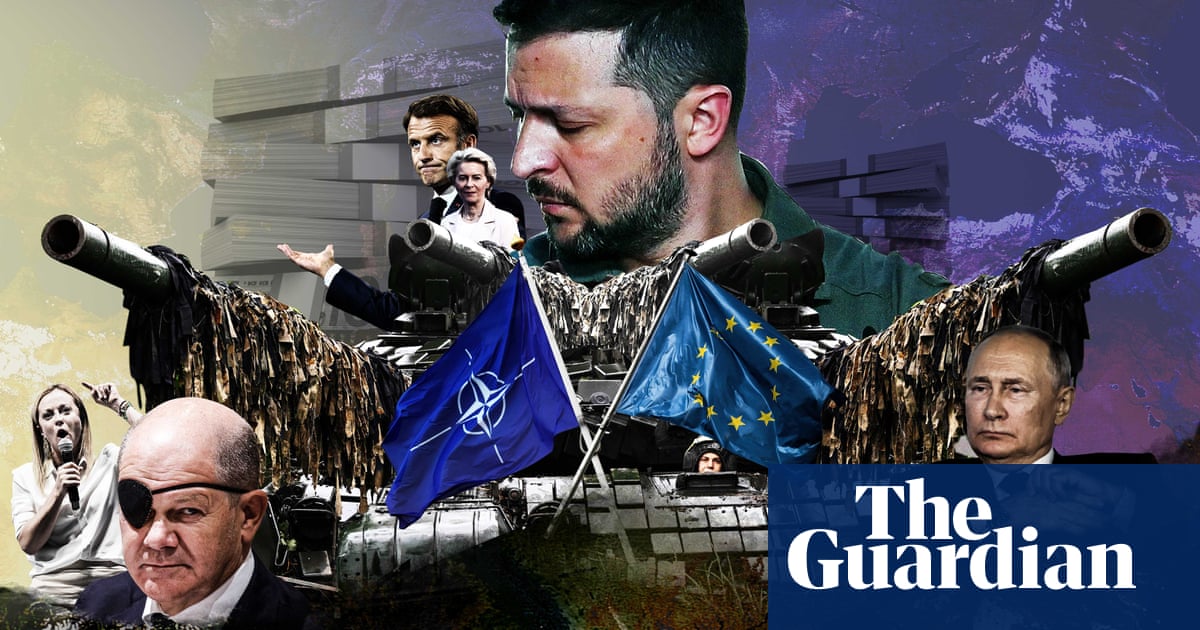
“The EU has changed. There is no turning back. We have turned out the lights behind us and there is basically only one way.”
The words of the Danish politician and EU commissioner Margrethe Vestager at a conference in May neatly reflect the mood among the Brussels elite, taken aback at their own ability to shed EU bureaucratic torpor, defend Ukraine, embrace enlargement and move closer to fulfilling Ursula von der Leyen’s ambition for the EU to become a “geopolitical force”.
“Our response to the invasion was by the hour at first, now not to the same degree, but it is absolutely Europe’s top priority and we will stay supportive of Ukraine until the war is won and Ukraine has been rebuilt, and become a member of the European Union,” Vestager continued.
“I think that is the crucial commitment that has been made, and that will be a better union when that is brought about – a more dynamic union and a more united union.”
Indeed, in the immediate aftermath of the Russian invasion, Josep Borrell, the EU foreign and security chief, argued the EU had grown up, “making more progress in a week toward the objective of being a global security player than it had in the previous decade”. The example of the brave Ukrainian resistance sprang the EU into a newfound sense of purpose.
“Russia’s war had awakened a slumbering giant,” he claimed. Measures that were unthinkable just a few days earlier, such as barring leading Russian banks from the Swift international financial messaging system and freezing the Russian central bank’s assets, were imposed at an unprecedented pace.
The price of failure was also dauntingly high. Take Jonatan Vseviov, the secretary general in Estonia’s directorate of the ministry of foreign affairs, and one of the key influences on Kaja Kallas, the Estonian prime minister.
“Everything is at stake in this war: each and every one of the core principles of European security have come under attack,” he said.
“They will either be strengthened as a result of this war, or they will be fundamentally weakened. The notions of territorial integrity, sovereignty, the unacceptability of aggression, the illegality of war crimes are being tested right now.
“Furthermore, our own identity as Europeans is being tested. We are being tested, and we will be seen on the world stage through the lens of how we behave today in the context of this conflict.
“Western credibility is at stake, which depends not just on the things that we say, not just the things that we do, but primarily on the results that we get. The results matter. We might as well do the right things and say the right things; if we fail, we fail.”
In an effort not to fail, the EU activated its temporary protection directive for the first time in history, giving more than 5.3 million Ukrainians the right to residence.
With the European Commission in the driving seat, it has for the first time imposed 10 rounds of economic sanctions against a country, all agreed – eventually – unanimously. National sanctions enforcement has now even become an EU competence.
The bloc has provided military assistance to Ukraine – the first time that European institutions have directly provided military assistance (including lethal aid) to a state, on top of finally ending their resistance to getting involved militarily in support of a third state at war.
At the same time European economic supply chains, and not just energy, are being systematically protected, a process that started with the pandemic, in some way the precursor event that challenged the post-cold war liberalist view according to which interdependences supported a virtuous cycle of mutual gains.
The new currency of EU council meetings became debates about weapons systems, ammunition supply chains and sanctions loopholes, not trade regulations or debt financing.
The very fact that the EU’s financing of military equipment for Ukraine comes from a fund termed the European Peace Facility, set up only in 2021 and outside the formal EU treaties, underscores how quickly Brussels has not just had to improvise, but re-found its very purpose.
Zaki Laïdi, a special adviser to Borrell and a professor at Sciences Po, has underlined why February 2022 represented such a shattering challenge for the EU, and required such a change in mindset.
“The European project was first and foremost intended to prevent a new conflict between France and Germany,” he wrote. “It aimed to pacify intra-European relations through exchange and economic cooperation.
“The framework was therefore Kantian: it was based on the principle of peace through exchange. Foreign policy was left to the side, either because no European state at that time wished to surrender its sovereignty in this sensitive area, or because those who were willing to do so only imagined this action exclusively within the framework of Nato.”
Nicole Gnesotto, vice-president of the Jacques Delors Institute, concurs. “In one night Russia killed all EU philosophy since 1956.
The European Economic Community was founded on the principle after the second world war that economic trade and interdependence was the best recipe for peace between France and Germany first, and then between Europe and the rest of the world. Overnight all this became obsolete.”
For most Europeans, a postbellum world had seemed the self-evident future, says Finland’s president, Sauli Niinistö. Western leaders envisaged a postwar European security order “that assumed the possibility of compatible interests, even among incompatible systems.”
So there has been a shock to the system. But now, as Brussels returns to work, questions start to gather around the promises made by Vestager and others. Eighteen months on, with as many as 500,000 killed or wounded, according to US estimates, the question of how this war ends remains as open as ever.
Is the EU truly willing to keep the war at the top of its agenda now that the Ukrainian counteroffensive has not produced the imagined breakthrough? Has the EU really reorganised itself enough? Is it serious about its promise of EU enlargement to the east – a move that would take the bloc from an already unwieldy club of 27 to more than 35?
Do the re-emerging storm clouds of populism, feeding off economic decline and migration, presage European parliamentary elections that cede power to a nationalist right more favourable to Putin? Can the EU truly become more sovereign or geopolitical?
In short, have the lights truly gone out on the past?
End of the peace dividend
Some reforms in the field of EU security look revolutionary, and irreversible. V-Adm Hervé Bléjean, the head of EU military staff until June, recalls that within 36 hours of the invasion, the EU, “previously associated only with economic and soft power, decided unanimously to provide money for lethal equipment to a country at war. If you would have asked me if that was possible one month before, I would have laughed at the idea.”
The Russian invasion would have succeeded, he claims, but for the EU providing light arms to target the 40 mile-long (60km-long) column of Russian tanks. “It was like shooting at elephants in a corridor,” he recalls.
Since then, the EU military staff has become a coordinator and the clearing house for at least two-thirds of the weapons sent by EU member states to Ukraine, including the financing schemes. The EU military staff, for instance, acts as a judge of the value of weapons. Two Czech-owned T-72 battle tanks were recently valued at €1m (£860,000).
So far, the EU has committed more than €5bn (£4.3bn) in military assistance to Ukraine, often in the form of reimbursements to member states that ship weapons to Kyiv. In 2022, the EU provided or pledged nearly €12bn in non-military aid; that number is closer to €18bn for 2023, with another €50bn pledged through to 2027.
Borrell now wants to create a Ukraine assistance fund for the period 2024-2027 worth €5bn annually to ensure the sustainability of the EU’s military assistance to Ukraine.
The EU is also now trying to put the European defence industry on to a war footing. Joint procurement of weapons by the European Defence Agency has been introduced for the first time.
Roughly €1bn is to be spent to deliver 1m rounds of ammunition.
In October 2022 the EU council agreed to train Ukrainian soldiers and launched the mission only one month later. Using two headquarters in Poland and Germany, 18 EU member states are now training Ukrainian soldiers.
Typically, 85% of a battalion of 150 people have no military experience when they start and yet within a month are trained to the level of joint fire coordination. The aim is to train as many as 40,000 Ukrainian soldiers by late October.
These EU-wide changes have been matched by a rise in nation state defence spending.
The peace dividend, or what Borrell calls the security “siesta”, is truly over. Russia’s invasion led to defence spending by EU states in 2022 for the first time surpassing that of 1989 – 30% higher than in 2013.
Although only seven Nato member states spent 2% or more of their GDP on defence in 2022, as recommended by the alliance, that number is due to reach 19 by 2024 and 24 by 2026. In other words, three-quarters of the alliance will be in compliance with the 2% rule in less than three years. Italy will reach the target in 2028 and Spain in 2029. Only three Nato countries – Canada, Iceland, and Luxembourg – still lack a plan to reach the 2% mark.
Yet the progress is limited. In the absence of alternatives, EU countries are not buying European but instead filling their short term gaps with US F-35s, only worsening defence fragmentation across the continent and undercutting plans for joint Franco-German fighters.
Defence purchases from outside the EU account for 78% of EU countries’ 2022-23 commitments with the US alone representing 63% of the share, according to the French security thinktank Iris. Efforts to incentivise joint EU procurement is painfully slow. The idea of strengthening the European pillar of Nato looks as elusive as ever. Borrell admits the phrase “strategic autonomy” remains toxic.
Energy restructuring
If the report card on security is a mixed bag, Europe has a less ambiguous reason to congratulate itself, and be surprised by its own adaptability. Vladimir Putin had been confident enough to tell a gathering of Russian oil executives in May 2022 that any announcement by the EU to sever itself from Russian energy would be an act of “economic … suicide” that “misunderstood the elementary laws of economics”.
Putin’s confidence seemed well grounded. Prior to the invasion of Ukraine, Europe imported 45% of its gas from Russia, with Germany particularly resistant to decades-long US warnings that such a dependence on a single ideologically hostile power was foolish.
Duly, once the war started, Putin resorted to using gas supplies as a weapon of war. From June 2022, gas supplies through Nord Stream 1, the 745-mile pipeline from the Russian coast near St Petersburg to north-east Germany, were cut to 40% of normal. Russia first cited technical problems.
By July the supply had fallen further down to 20%, with Gazprom blaming “routine maintenance and faulty equipment”. By late August, with gas prices spiralling, Nord Stream 1 was not transporting any gas at all. Germany, in the words of its economy minister, Robert Habeck, was experiencing “an alarming structural rupture”.
Faced by the sabotage, and the perversity of continuing to pay Russia billions for its gas, the EU had by May produced a document, Repower EU, showing how it would go in search of alternative supplies and cut consumption. It has been estimated that about 50% of the deals that the bloc and its member states have struck since 2022 have concerned gas or liquefied natural gas.
Again the EU, and not nation states, played the leading role, locating alternative suppliers ranging from Norway to Nigeria. The EU felt confident enough in June to announce a ban on imports of Russian crude oil from December 2022, and diesel from February 2023. Only two pipelines, one via Turkey and the other via Ukraine, continued to supply Russian gas to the EU.
In the summer, EU states, cajoled by the commission, agreed voluntarily to try to reduce gas use between August 2022 and March 2023 by 15% in comparison with average consumption over the previous five years. The plan worked. To constrain prices further, the EU27 agreed in December 2022 to buy gas collectively, so improving the purchasing power of its gas firms and copying the model used to buy Covid-19 vaccines.
This planning, in conjunction with unusually mild temperatures, meant that by the turn of the year German officials were able to declare it would survive the winter without gas outages. Putin had fired off his biggest single economic weapon for no purpose.
EU officials say stocks are 90% full, months before a 1 November deadline. Further gas storage for Europe is possible in Ukraine, as long as the underground facilities are not bombed. Collectively it represents the single most rapid energy restructuring ever attempted. Last year, for instance, was the first time that renewable power generated more of Europe’s electricity than natural gas.
This restructuring is a slow-burn disaster for the funding of the Russian war machine. The first year after Russia’s invasion of Ukraine, the EU paid just under €140bn to Russia for fossil fuels, including €83bn for oil and €53bn for natural gas. A further €3bn was spent on coal.
The payments for oil imports were divided between €53bn for crude and €30bn for refined oil products. Gas imports were split between €41bn for pipeline imports, and €12bn for liquified natural gas (LNG). All those exports, inflated by the huge rise in energy prices, ended up being turned into missiles to rain down on Ukrainian cities.
But Germany, which imported the most Russian gas of any EU country before the outbreak of the war, has since August 2022 not been importing Russian gas at all via pipelines. Instead, the German authorities nationalised Gazprom assets in Germany, built at record speed several LNG terminals and strengthening gas cooperation with Norway, which became Germany’s main gas supplier in 2022. Putin had tried to strangle the European economy. Instead he has permanently destroyed Gazprom’s biggest market.
In the first part of the year the picture looked grim for the Russian economy. Exports and state revenues slumped, at a time when Russian military spending rose to 6% of GDP. State revenue from Russian oil and gas taxes dropped by 47% between January and June this year compared with the same period last year. The Russian ruble finally came under pressure; interest rates too.
However, Russia has managed to redirect significant volumes of its oil from Europe to Asian markets, and the discount at which it is having to sell is narrowing so that, according to the Kyiv Institute, Russian oil export revenues in August reached $17.1 bn, the highest reading since October.
The scale of Russia’s budget deficit is moderating. It also looks as if Moscow is becoming more adept at avoiding the G7’s $60 a barrel crude oil price cap by reducing the use of western insurers to transport the oil.
Nevertheless, the Kyiv Institute reckon Russia has lost $100bn in oil export revenues since February 2022 and $40bn in gas revenues. That is larger than the annual Russian defence budget.
Germany and France
So, spurred on by Ukraine, Europe has made strides on energy and defence resilience, but ultimately the next steps depend as ever on politics, and the Franco-German axis.
Although much is made of power spreading to the east in the EU, it is still politics in these two countries that will determine Europe’s future, and possibly Ukraine’s fate.
Gnesotto says: “No country has been more affected by the war than Germany. To abandon its faith in pacifism and trade requires a profound revolution.” Yet there is a wall of scepticism about how profound a revolution the stubbornly cautious German chancellor Olaf Scholz is willing to lead.
The reality is that as far as military support to Ukraine is concerned, Scholz has not yet been willing to supply a single major type of weapon that has not already been agreed by the US. Whether Leopard 2 tanks, airplanes or Taurus cruise missiles, Germany waits first for the US to consent. Delays, prompted by fears of escalating the conflict, have led to Ukraine being deprived of weapons for months.
Volodymyr Zelenskiy, for instance, was in the UK in February asking for “wings to give Ukraine freedom”, but it was only in late August that the Netherlands and Denmark finally had US political clearance to announce they will together donate up to 40 F-16 planes once pilots and ground crew have been trained.
Zelenskiy said he needs three times that amount of planes. And anyway it will be well over a year between Zelenskiy’s plea in London and a Ukrainian pilot actually flying an F-16 over Ukraine. Getting F-16 squadrons ready for battle could even take “four or five years”, James Hecker, commander of US air forces in Europe and Africa, recently said. Yet Borrell told the Spanish newspaper El País that a frontal attack against Russian positions without air support would be “suicidal”.
In a short but excoriating note, Jack Watling of the UK’s Royal United Services Institute (Rusi) wrote this summer: “The war in Ukraine has revealed significant deficiencies in the machinery of government in all Nato capitals. The most glaring deficit is the inability of the Ukrainian partners to calculate the time frame that arises between decisions and the desired results. The delay between knowing what was needed and agreeing to do it has proven very costly”.
Watling did not name Berlin or Washington in his structures, but Scholz’s declaration of a Zeitenwende, or “epochal turn”, in German security policy in February 2022 raised unmet expectations. The steady rise of the far-right AfD in the polls to above 20%, and the mood of overall German economic pessimism, will only reinforce Scholz’s reluctance to challenge his voters.
By contrast, the mercurial Emmanuel Macron, schooled by Putin’s refusal to compromise at the war’s outbreak, seems to have gone through his own personal Zeitenwende, leaving the “Putin must not be humiliated camp” to move closer to the “Russia must lose camp”, a division, however crude, that haunts Europe.
But he has moved most on the issue of EU enlargement. Traditionally French diplomacy had thought to design Europe’s security architecture with, rather than against, Russia. Initially Macron tried to negotiate with Putin on that premise, but at some point in the summer of 2022, after his visit to Kyiv in June of that year, he gave up.
Macron’s full recantation came in his speech on 31 May this year in Bratislava, arguably the most important delivered by a European leader since the war broke out. Paris has always been wary of EU enlargement, fearing a wider Europe would block a deeper Europe, and so thwart France’s ambition for the bloc to become more autonomous from the US.
The Bratislava speech contained Macron’s familiar call for a stronger European defence arm and complained that Europe was still a “geopolitical minority”. But less familiar was his overture to the east, to countries that have been victims, rather than the instigators, of imperialism.
Admitting that neither Nato nor the EU had provided sufficient security guarantees to “the countries at our borders”, Macron said the question for him was no longer whether the EU should enlarge, but when, and how swiftly.
Borrowing from the late Czech writer Milan Kundera, he vowed the west would not be “kidnapped a second time” as it had been by the previous Soviet occupation of central and eastern European. The whole “spheres of influence” principle that had led Europe to capitulate to Russia’s “security concerns” had been abandoned.
According to his biographer, Joseph de Weck, Macron had made a bet on how Ukraine could change Europe. De Weck senses Macron believes: “The debate pitting enlargement versus deepening is its history. Both will have to accompany each other. And as the EU moves east, the EU with Ukraine won’t just get a ‘bigger Poland’ – a country governed by the nationalist PiS party that buys South Korean tanks and fights with Brussels at every turn – but a country that could be much more aligned with French thinking on Europe.”
A formal decision to open membership negotiations with Ukraine (and Moldova) is now due in December 2023, after an initial discussion in October. But thereafter little consensus exists. What is in theory a highly legalistic process is of course utterly infused by politics, and will require finesse in meeting the expectations of those awaiting accession.
Over the summer, the European Council president, Charles Michel, claimed the EU could be ready to enlarge by 2030. But a trailblazing report from a semi-official Franco-German group of 12 experts also showed how much the EU will need to transform internally if it is to function as a group of 35 or so, and how much success will rest on flexibility.
It imagines the EU operating as four distinct tiers of integration. Although the national veto would be eradicated, opt-outs would be allowed. Means would have to be found to sanction a major increase in the EU budget and to entrench the rule of law.
Powerful interest groups would have to be persuaded. The two biggest areas of the EU budget are the common agricultural policy (CAP) and cohesion, or regional spending, which together account for 62% of the EU’s seven-year budget or about €370bn each.
Admitting Ukraine would test the limits of solidarity and turn many current beneficiaries of EU funds, including Poland, into net contributors.
Marija Golubeva, a fellow at the Centre for European Policy Analysis, says: “The fact remains that if Ukraine joins, the CAP budget will either have to be increased dramatically or will evaporate, given the sheer area of agricultural land in Ukraine (it’s bigger than the whole of Italy), with the average farm taking up about 1,000 hectares compared to 16 hectares in the rest of the EU. No one among the current EU members has been able to offer a viable solution so far. Yet there is just no way to avoid it; the issue is too big.”
The European Commission has already stated that the current EU budget, known as the “multi-annual financial framework”, could not cover these needs and that new financing sources will have to be identified.
Yet, despite the precedent created by the EU Recovery and Resilience Facility – toward which the EU borrowed about €800bn to help member states recover from the Covid-19 pandemic – European leaders have thus far refused to issue more common debt. So it is entirely unclear how Europe will finance addressing its collective challenges, as well as Ukraine’s reconstruction.
The second question is whether many countries will be prepared to follow a German call for majority voting to be introduced in EU foreign affairs as the only way to prevent political paralysis inside an enlarged EU.
New wave of integration
The worry is that a European elite may be happy to throw itself into these high-minded discussions but a second wave of populism is set to resist, using the furnace of next year’s US presidential and European parliamentary elections.
This in turn places an agonising burden on the Ukrainian army to convince European voters that all the military aid has been worthwhile, and so forestall the inquests about a long stalemate and why the counteroffensive has not met its objective of liberating the 60 miles from the current frontline to the Sea of Azov.
Borrell is always eager to speak of a war of narratives, and he is beginning to nod towards the argument that Ukraine has been let down by a US-led reluctance to supply Ukraine with the weapons it needs, meaning Kyiv lost a golden opportunity to strike earlier before Russia had built its defences.
Faced by the criticism that Washington’s “China first” policy means the US has moved too slowly, Borrell said it was a reasonable criticism. “When one decides to help a militarily invaded country … hesitating can be a very costly response,” Borrell said at a seminar at Quo Vadis Europa in Santander.
“It is clear from the starting point there has been a continuous hesitation about taking the necessary steps to supply Ukraine with defence capacity.”
“If decisions had been taken faster and with more anticipation on some of the weapons systems which we ended up sending, then probably the war would be different and in any case we would have saved lives.”
In the end, regardless of the war’s outcome, the rationale for a new wave of European integration looks increasingly hard to question. Europe, Borrell argues, is now operating in a world of greater multipolarity but less multilateralism. There are more global actors, some driven by values, others purely transactional, but fewer rules.
“Traditional ‘top-down multilateralism’ involving major conferences during which all countries take decisions together on issues is less and less effective. In this climate it is essential for European countries to stick together,” he argues.
Europe may have turned out the lights on the past – but it is nowhere near to seeing a clear outline of its future.





